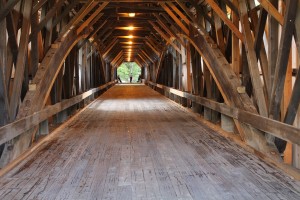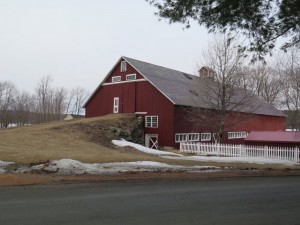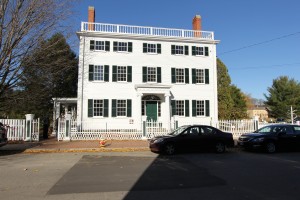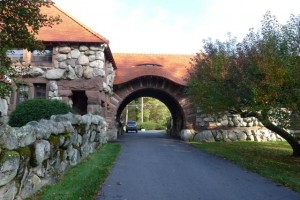
The Blair Bridge in Campton NH has been a landmark since its original construction in 1829. After succumbing to arson, it was rebuilt in 1869 and lasted until 1977 when Milton Graton and his son Arnold completed some much needed restoration. In 2011 hurricane Irene caused some structural damage and once again the Gratons were assigned the task. Though Milton had since passed, his son Arnold with the help of his wife Meg and her son Tim completed a yearlong restoration of the historic bridge.
One afternoon while taking some photos of the old Blair Chapel for a project, I stopped at the bridge to see how the restoration was progressing. I noticed a woman in a hard hat and immediately introduced myself and asked if she was with Arnold Graton, Inc.? She said that she was in fact Arnold’s wife and we then chatted about the project. She was very kind and although the bridge was closed to the public, she asked if I would like to tour the bridge. I was thrilled to walk on a bridge that was under construction, though I had to watch my step given most of the flooring had been removed. Afterward I met Arnold and thanked them both for allowing me the opportunity to see a bridge up close.
The following spring I sent Arnold and Meg all the photos that I had taken and asked if it would be possible to allow a group of historic preservation students to tour the bridge before it officially opened. My argument was that as historic preservation students we rarely get to meet the builder of a restoration project because once we visit a site, everything has been completed and no one is there. I didn’t expect an answer immediately, so I was pleasantly surprised when she emailed me the next day and agreed to the visit.
As much as I would have loved to have had a strong turnout from the HP community, only five of us attended the tour, Stacey Yap—the HP & HS program coordinator, Ellen Skonberg –a fellow student, Sandra Heaney—a friend and historic property owner, Jim Garvin—the retired State Architectural Historian, and myself. Tim, who was the project foreman, started the tour and then turned it over to Jim who gave us all a master class on bridge construction. It was a unique opportunity to see a bridge undressed and to have Arnold and Jim as our guides. I will always be indebted to Arnold, Meg, and Tim for allowing us access, and to Jim for being so thoughtful to take time out from his busy schedule and impart his vast knowledge to such a small group. I cannot stress enough how field trips are an essential part of our historic preservation education. We hope to put together another field trip this spring, so I will keep you posted.
Photos




